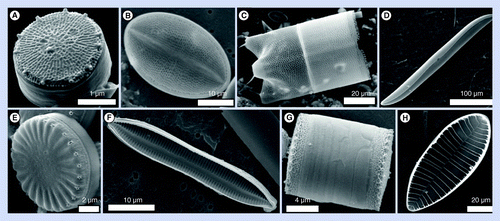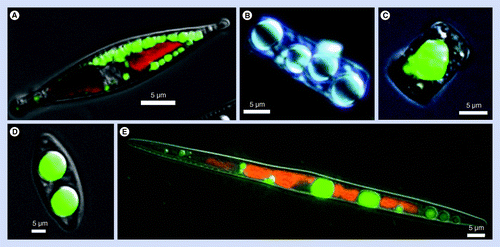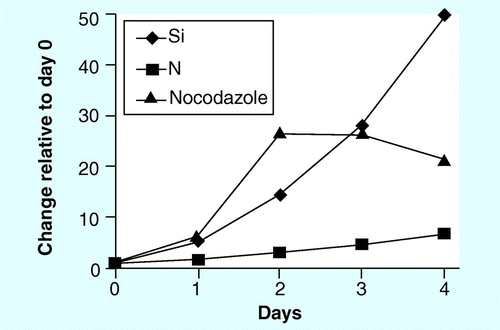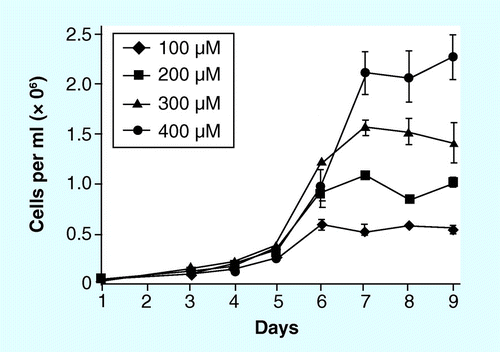Figures & data
(A) Thalassiosira pseudonana, (B)Cocconeis sp., (C)Lampriscus sp., (D)Gyrosigma balticum, (E)Cyclotella cryptica, (F)Nitzschia sp., (G)Thalassiosira weissflogii and (H)Achnanthes sp.

(A) Nitzschia curvilineata, (B)Cyclotella cryptica, (C)C. cryptica, (D)Nitzschia alba and (E)Nitzschia filiformis. Green fluorescence is BODIPY staining of neutral lipids, red is chlorophyll autofluorescence. (B) is a differential interference contrast image with no fluorescence.

Branch lengths do not correspond to phylogenetic distances. Red arrow locates diatoms and green arrow locates chlorophytes.
Reproduced with permission from Citation[176].
![Figure 3. Unrooted consensus phylogeny of photosynthetic eukaryotes and derived taxa.Branch lengths do not correspond to phylogenetic distances. Red arrow locates diatoms and green arrow locates chlorophytes.Reproduced with permission from Citation[176].](/cms/asset/fdffc15d-9467-4781-9ecb-768acad02eee/tbfu_a_10815964_f0003.gif)
Cultures were harvested from exponential phase and inoculated into fresh medium for the various treatments. The nocodazole treatment was done in a separate experiment from Si and N.

Incremental amounts of silicic acid were added to the cultures at day 1 and growth followed thereafter. On day 7 when all cultures were limited, the ratio of cell numbers to starting concentration were in exact correspondence.
